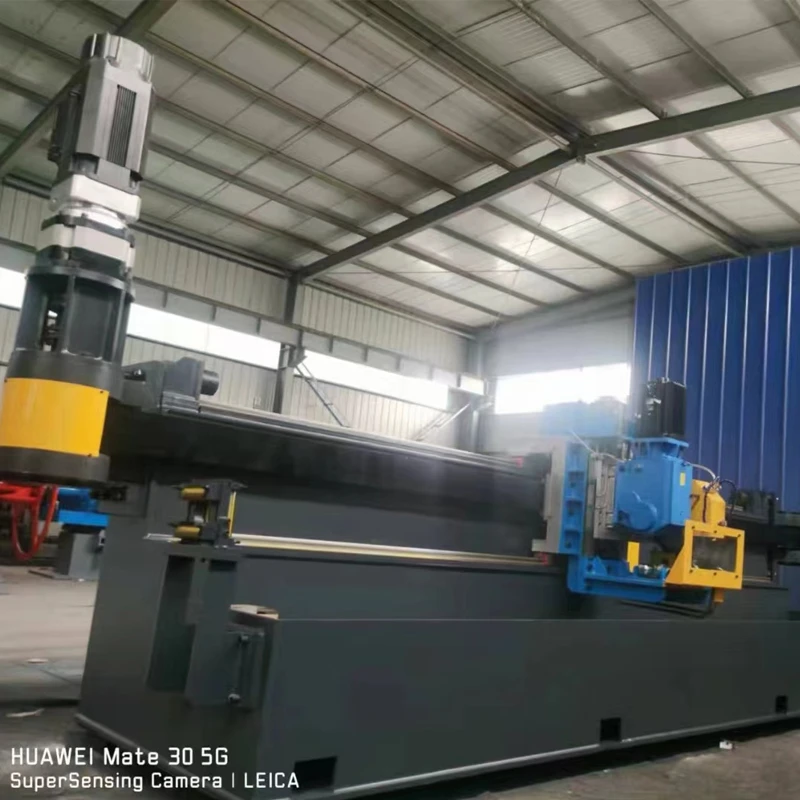Innovative Techniques for Effective Straightening Press Operations and Optimization
Mastering the Straightening Press A Guide to Precision and Efficiency
The straightening press, an essential piece of equipment in the manufacturing and metalworking industries, plays a crucial role in producing flat, accurate components from various types of metal. This article delves into the functionality, applications, and benefits of using a straightening press, emphasizing how it enhances production efficiency and product quality.
What is a Straightening Press?
A straightening press is a mechanical device used to correct the shape of metal materials that have become warped or distorted during the manufacturing process. These can include sheets, rods, and other profiles that require precise geometric specifications. The press utilizes hydraulic or mechanical systems to apply controlled force to the workpiece, enabling the operator to achieve the desired straightness and flatness while minimizing the risk of damaging the material.
How Does It Work?
The operation of a straightening press involves several key components and steps. Firstly, the material is loaded into the press, which is typically equipped with rollers or plates designed to hold the workpiece securely. The operator sets the required parameters, including the amount of force to be applied and the specific angles involved in the straightening process.
Once activated, the press exerts force on the material, often in multiple stages, to gradually correct any bends or warps. Advanced models feature computerized controls that allow for precise adjustments, ensuring that operators can achieve exact specifications. This level of accuracy is vital for applications where even minor imperfections can lead to significant functional issues in the final product.
Applications of Straightening Presses
Straightening presses are widely used across various industries, including automotive, aerospace, construction, and general manufacturing. In the automotive industry, for example, straightening presses are crucial for producing vehicle body panels that must meet rigorous standards for both safety and aesthetics. In aerospace, the need for precision straightening is even more critical, as components must withstand extreme conditions and meet strict regulatory guidelines.
straightening press

Additionally, straightening presses are commonly used in the production of structural steel components. Bridges and buildings rely heavily on accurately straightened materials that provide the necessary strength and stability. Thus, the availability of a reliable straightening press significantly enhances overall production capabilities.
Benefits of Using a Straightening Press
1. Improved Accuracy Straightening presses significantly improve the accuracy of metal components, which is crucial for ensuring proper fit and function in assemblies. This precision reduces the need for further machining or adjustments, saving time and resources.
2. Increased Efficiency The mechanized nature of straightening presses streamlines the production process. Operators can straighten multiple pieces quickly and uniformly, enhancing productivity and lowering labor costs.
3. Quality Assurance By correcting defects in metal materials, straightening presses contribute to higher quality products. This leads to increased customer satisfaction and reduced returns due to manufacturing flaws.
4. Versatility Modern straightening presses are designed to handle a wide range of materials and shapes. This versatility allows manufacturers to adapt to various product lines without needing specialized equipment for each type of material.
5. Reduced Waste By efficiently straightening materials rather than discarding warped pieces, manufacturers can minimize material waste and promote more sustainable practices.
Conclusion
In conclusion, the straightening press is an invaluable tool in the world of manufacturing, enabling companies to produce high-quality, accurate metal components efficiently. Its applications stretch across various industries, underscoring its versatility and importance in modern production processes. As technology continues to advance, straightening presses will undoubtedly evolve, incorporating features that enhance precision, efficiency, and environmental sustainability. For manufacturers looking to improve their output and product quality, investing in a straightening press is a step toward greater operational success.
-
High Frequency Straight Seam Welded Pipe Production Line|BzZhou Xinghua|Precision Welding&EfficiencyNewsJul.30,2025
-
High Frequency Straight Seam Welded Pipe Production Line - BzZhou Xinghua|Precision Engineering&EfficiencyNewsJul.30,2025
-
High-Frequency Straight Seam Welded Pipe Production Line-BzZhou Xinghua Machinery Equipment Manufacturing Co., LTD.NewsJul.30,2025
-
High-Frequency Straight Seam Welded Pipe Production Line-BzZhou Xinghua Machinery Equipment Manufacturing Co., LTD.|Precision Manufacturing, High EfficiencyNewsJul.30,2025
-
High Frequency Straight Seam Welded Pipe Production Line-BzZhou Xinghua Machinery Equipment Manufacturing Co., LTD.|Precision Steel Pipe Manufacturing&Industrial EfficiencyNewsJul.29,2025
-
High-Frequency Straight Seam Welded Pipe Production Line-BzZhou Xinghua Machinery Equipment Manufacturing Co., LTD.|Precision Steel Pipe Manufacturing&Industrial EfficiencyNewsJul.29,2025


